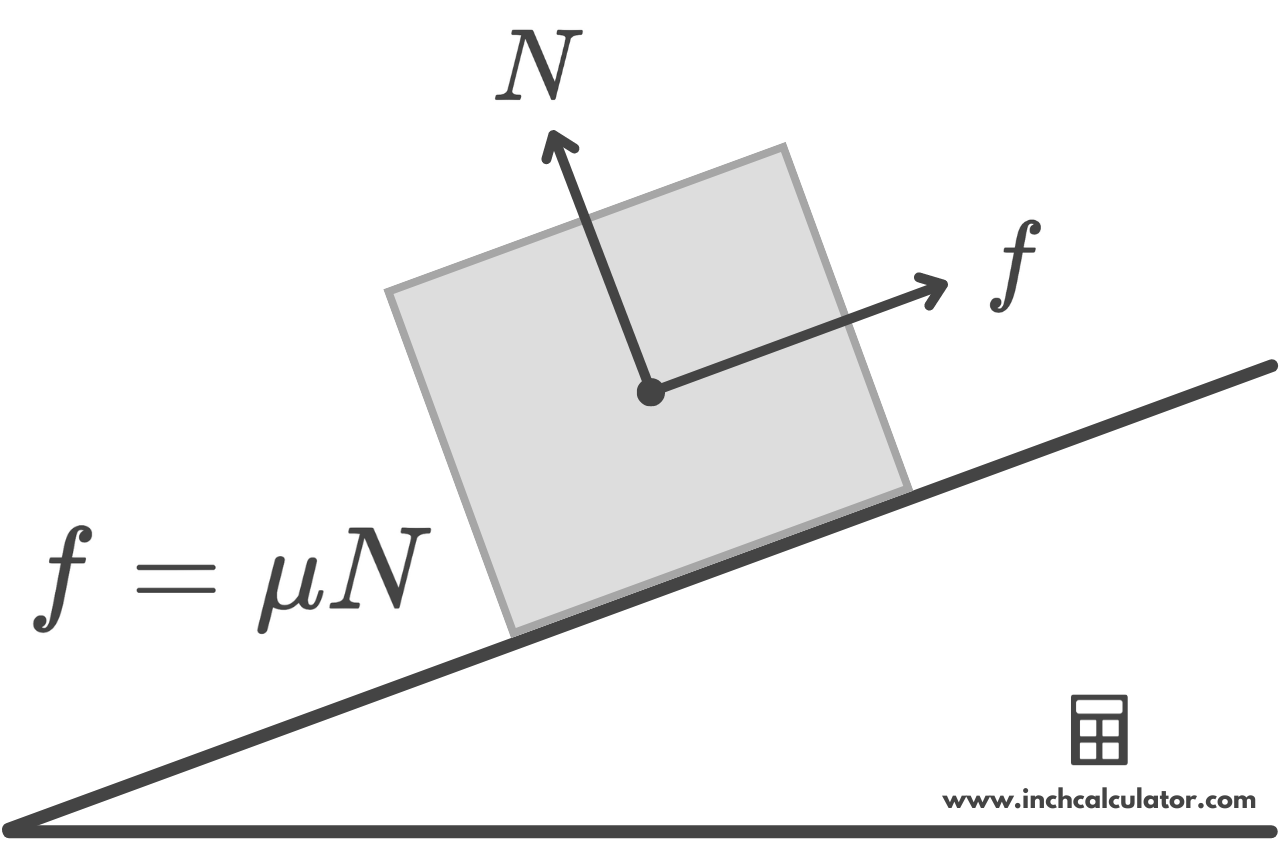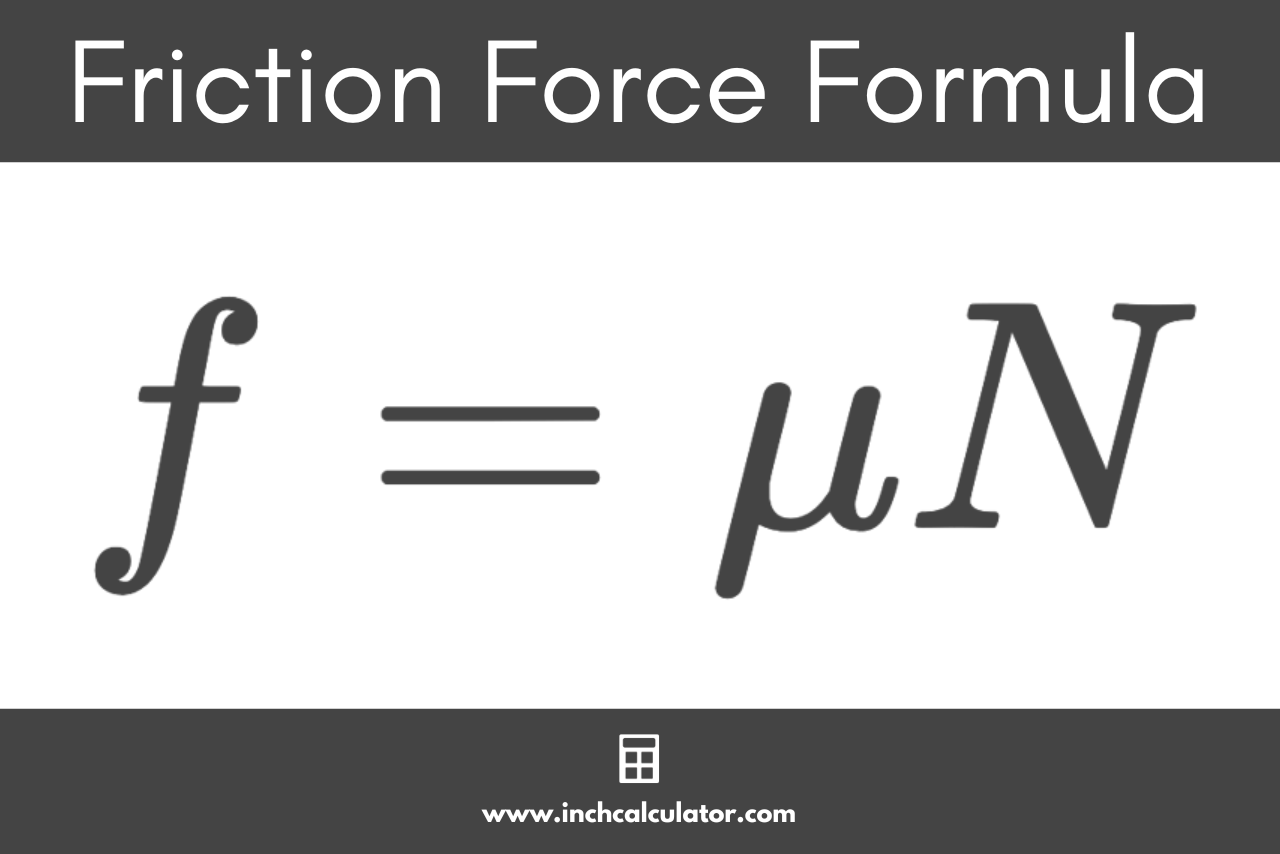Friction Force Calculator
Use our friction force calculator to find the friction force exerted on an object given the coefficient of friction and normal force.
Friction Force:
Friction Force Formula
Coefficient of Friction Formula
Normal Force Formula
How to Find Friction Force
Friction force (𝑓) is a resistive force that acts opposite to the direction of movement when two surfaces come into contact. It’s a fundamental concept in physics that explains how objects slow down and eventually stop when moving against another surface.

This force arises due to the microscopic interactions between the surfaces in contact, including bumps and irregularities on those surfaces, as well as the chemical bonding that might occur between them.
Friction can be broadly categorized into two types: static friction and kinetic (or dynamic) friction.
Static friction operates when two objects are not moving relative to each other and prevents them from starting to slide. Once motion begins, kinetic friction takes over.
Kinetic friction is usually less than static friction and remains constant regardless of the speed of the sliding object.
Friction Force Equation
You can find the force of friction using the following formula:
𝑓 = μN
Where:
𝑓 = force of friction
μ = coefficient of friction
N = normal force

The coefficient of friction depends on the materials of the surfaces in contact and must be determined experimentally or sourced from tables. Common materials have well-documented coefficients of friction.
You can find the normal force exerted on an object using our normal force calculator.
For example, let’s calculate the force of friction resisting a wooden block with a coefficient of friction of 0.4 between it and the surface it sits on and a normal force action on it of 100 Newtons.
𝑓 = 0.4 × 100 N
𝑓 = 40 N
Thus, the frictional force that acts to resist the sliding of the wooden block is 40 Newtons.

